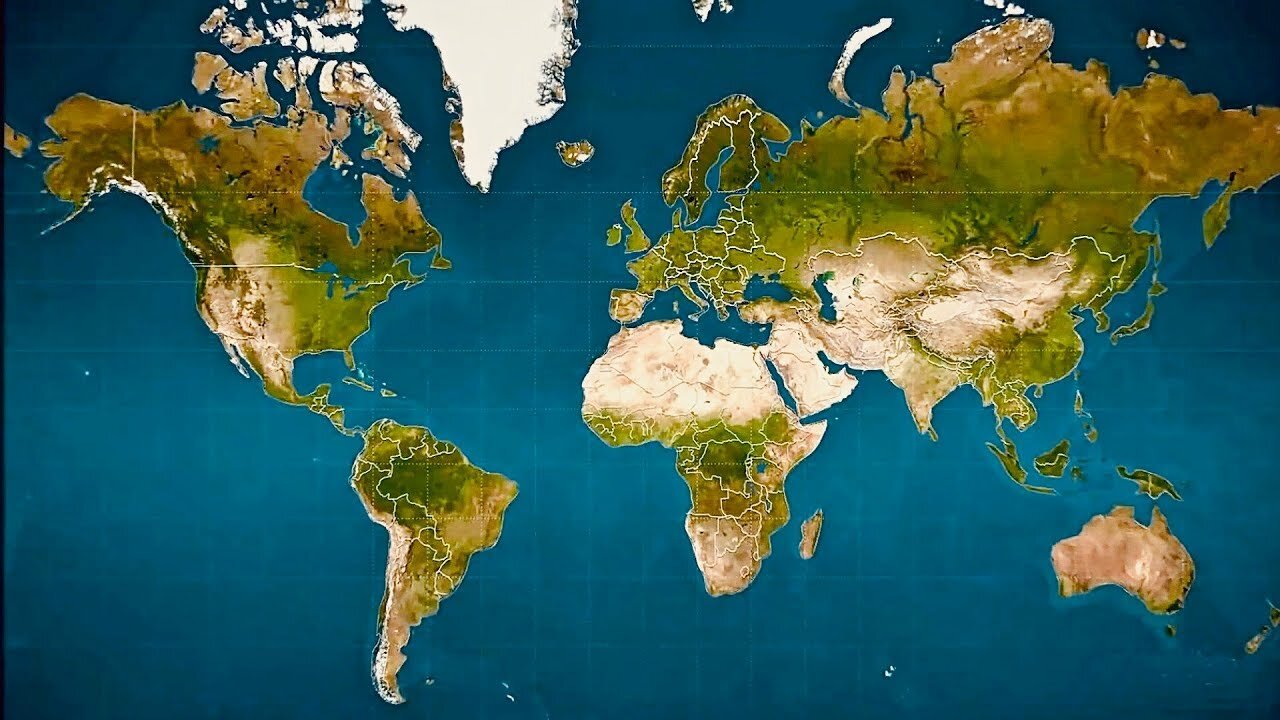Premium Only Content

Most Common World Map Is WRONG
Thanks to a cartographic technique called the Mercator projection, most people have a skewed perception of the true size of countries.. Used just about everywhere, from textbooks to Google Maps, the Mercator projection map is the way most of humanity recognizes the position and size of Earth’s continents. In 1569, the great cartographer, Gerardus Mercator, created a revolutionary new map based on a cylindrical projection. The new map was well-suited to nautical navigation since every line on the sphere is a constant course, or loxodrome. In modern times, this is particularly useful since the Earth can be depicted as seamless in online mapping applications.
That said, the true sizes of landmasses become increasingly distorted the further away from the equator they get. Mercator’s map inadvertently pumps up the sizes of Europe and North America. Visually speaking, Canada and Russia appear to take up approximately 25% of the Earth’s landmass, when in reality they occupy a mere 5%. When Antarctica is excluded (as it often is), Canada and Russia’s visual share of landmass jumps to about 40%!
Canada is the second largest country in the world, but not by much.
Africa, South Asia, and South America all appear much smaller in relation to countries further from the equator.
And from a North American perspective, countries such as Australia and Indonesia appear much smaller than they actually are. Comparing the landmasses on the same latitude as Canada helps put sizes into perspective.
Greenland is the world’s largest island, but looking at its hyper-exaggerated depiction in the map below, you’d be forgiven for wondering why it isn’t a stand-alone continent. In reality, Greenland is about fourteen times smaller than Africa.
Is Bigger Better?
Though Mercator’s map was never intended for use as the default wall map in schools around the world, it has shaped the worldviews of billions of people. Critics of the map – and similar projections – suggest that distortion reinforces a sense of colonialist superiority. As well, the amount of territory a country occupies is often correlated with power and access to natural resources, and map distortions can have the effect of inadvertently diminishing nations closer to the equator.
A prime example of this argument is the “True Size of Africa” graphic, which demonstrated to millions of people just how big the continent is.
Growing awareness of map distortion is translating into concrete change. Boston public schools, for example, recently switched to the Gall-Peters projection, which more accurately depicts the true size of landmasses.
In our society we unconsciously equate size with importance and even power.
– Salvatore Natoli, Educational Affairs Director, AAG
Music: The Inventor by Dhruva Aliman
Amazon - https://amzn.to/3eyYxeD
https://music.apple.com/us/artist/dhruva-aliman/363563637
https://dhruvaaliman.bandcamp.com/album/king-neptunes-travelling-merchants-and-their-adventures-in-and-beyond-the-sea
http://www.dhruvaaliman.com/
Spotify - https://open.spotify.com/artist/5XiFCr9iBKE6Cupltgnlet
-
 5:15
5:15
Seeker Land
14 days agoWorld's Safest Motorcycle - Powerful EV - Fully Enclosed for Long Distance Travel - The Monoracer
30 -
 10:14:18
10:14:18
Dr Disrespect
13 hours ago🔴LIVE - DR DISRESPECT - ARC RAIDERS - AGAINST ALL DANGER
163K24 -
 32:09
32:09
ThisIsDeLaCruz
1 day ago $0.01 earnedFalling In Reverse: Christian Thompson’s Stage Tech Revealed
17.1K2 -
 LIVE
LIVE
SynthTrax & DJ Cheezus Livestreams
1 day agoFriday Night Synthwave 80s 90s Electronica and more DJ MIX Livestream 80s Night / Late Night Nostalgia
377 watching -
 4:05:52
4:05:52
Nerdrotic
8 hours ago $0.18 earnedHollywood REGRET | Disney's Predator | The Feminist Avengers - Friday Night Tights 379
45.9K15 -
 2:36:22
2:36:22
Mally_Mouse
4 days agoFriend Friday!! 🎉 - Let's Play! - MIMESIS
14.4K2 -
 41:20
41:20
MattMorseTV
5 hours ago $0.39 earned🔴Schumer just BACKSTABBED his OWN VOTERS. 🔴
26.2K56 -
 3:33:34
3:33:34
MissesMaam
5 hours ago*Spicy* Friend Friday with Mally_Mouse!! 💚✨
6.91K3 -
 57:44
57:44
Candace Show Podcast
5 hours agoBen Shapiro Is Crying Again. | Candace Ep 261
58.5K206 -
 4:13:24
4:13:24
megimu32
4 hours agoOFF THE SUBJECT: MEMESIS w/ MALLY MOUSE | MISSES MAAM | SAVAGEJAYGATSBY
3.59K2